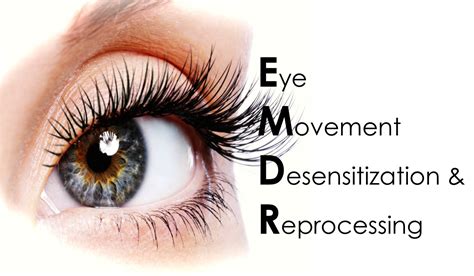Much has been written about just how effective and fast acting Eye Movement Desensitization and Reprocessing or EMDR can be for treating trauma and other psychological disorders, but can it actually be self administered for those who cannot find or afford, or don’t want to go, to a qualified therapist?
In short, EMDR can be self administered but in general is not recommended for anything other than small scale traumas, and perhaps certain moderate ones. For any large scale “Big T” traumas, such as war and combat experiences, physical and sexual assults, near death experiences and other severely traumatic life events, it is highly recommended that EMDR is done only with a qualified practitioner.
The main reasons for this are firstly that the EMDR process involves much more than just eye movements to make sure it is truly effective in resolving and reworking trauma, and secondly there are safety mechanisms built into the formal process of EMDR when done with a therapist that make it easier to handle any difficulties which come up.
These safety nets are absent when someone is trying to self administer EMDR. In short, there is far more chance that EMDR won’t be conducted correctly when it is attempted outside a formal therapeutic setting and therefore seeking the help of a qualified EMDR counsellor is recommended in the vast majority of cases. Let’s look at the issue in more detail below.
Contents
EMDR is Generally Better With Done a Therapist
In order to find out more about the question of self administering, we corresponded with EMDR practitioner Dr James Alexander from Australia, to specifically ask whether the process can be done by oneself. His response very articulately sums up the issue of self administering, so we will reproduce it here:
“Yes, it can be self-administered (as can EFT)- but, not advisable when dealing with anything other than very small t traumas (and the distinction between them and Big T traumas can disappear quickly once you get into them- we are often surprised by how much charge even small t traumas can entail). Overall, I’d suggest that we are not really ‘meant’ to try and address trauma on our own.
So, I’d recommend getting over any reserve and working with a skilled therapist. And keep in mind, there is no necessity for big cathartic responses to EMDR- some people will demonstrate this, others wont, and there is no difference in the outcomes.
People have differing levels of comfort with emotional expression- EMDR is not trying to force any particular mode, just allowing people to respond in a way they feel comfortable with.
Good EMDR happens in the context of a good therapeutic relationship- in which there is mutual trust built up over a period of time. That will generally allow people to freedom to respond in a manner which is natural to them.”
In other words, in the vast majority of cases it is much better to work with a therapist to ensure you have the correct support systems in place to both deal with the trauma and also any problems which may occur trying to work with the trauma.
There are also safety nets built into the EMDR process when done with a qualified therapist that aren’t there when self administering, making the risk of incomplete trauma processing and even re-traumatization much greater. We have embedded a video by Dr Alexander below where he discusses these safety nets in detail
EMDR Is Far More Than Just Eye Movements
Another reason why EMDR is far better delivered by a therapist is that the entire process actually involves far more than just eye movements, which are just one part of an 8 phases process. See our article The 8 Stage Process of EMDR for a more complete breakdown of the entire process.
Put simply, there are things which need to be done both before and after the actual eye movements to make sure that the entire process works properly and that any trauma is actually fully and correctly processed to resolution.
For instance before any therapy is carried out, the therapist and client must draw up a clear patient history of traumatic life experiences and background, and group these experiences into suitable groups or classes of experience to work on. These classes may involved general labels like humiliation, ridicule, rejection and so on.
The therapist must also then tap the client neurologically into this trauma, which again is something that is difficult and sometimes dangerous for someone to do by oneself. Intellectual memories of an experience are usually not sufficient; a client must be as much as possible tuned back in to the visceral emotions and feelings that were experienced at the time, and this work is for obvious reasons best done in a controlled safe environment.
Once the eye movements have stimulated the mind/brain to begin the processing of a memory, the therapist must also help the client install newer, healthier, adaptive beliefs about oneself on top of the original trauma. A person’s self image and beliefs in relation to the trauma have to be consciously reworked and again this is something that eye movements alone may not achieve.
The therapist will also follow up with clients to make sure any memories have been fully processed to resolution and there are no psychosomatic remnants of the trauma still showing up in the client’s body. They are also there to stop the process at any time the client feels the process is becoming too overwhelming, and help bring them back to a calm relaxed state before they leave the session.
These are all reasons why it is usually far better to conduct EMDR in a safe, controlled environment with a qualified practitioner. Put simply, it just ensures that the process works properly, stays safe, and does the job it is meant to do for the client. The larger the traumas that are being dealt with, the more this principle is true.
EMDR Can Be Self Administered
To balance the picture up, we will mention that EMDR can be self administered; it is just that it is not recommended for anything other than very small traumas, simply because there is no guarantee it will either be effective or safe when done by oneself.
However, it is also important to be realistic here and accept that for a start EMDR therapy is either not available or affordable to many people around the world who could benefit from it. It is not a mainstream form of therapy and so qualified practitioners are not as common as conventional psychotherapists.
There is also no guarantee that a person who discovers about EMDR and would like to explore treatment can find a therapist to see within travelling distance. Similarly, the treatment can be expensive and be out of range of some people if they don’t have insurance or it is not covered on their plan.
It is also true that life events can sometimes unexpectedly throw trauma on us and put us in an uncomfortable place inside, and a therapist cannot just be there on demand to help us. In these cases it would be silly not the self administer some kind of EMDR, even somewhat incorrectly, if it still managed to calm our mental state and somewhat process the uncomfortable emotions inside us at that moment.
This is in fact exactly what happened to this writer and what motivated the creation of this blog. I accidentally self administered EMDR several times when life threw unpleasant traumas my way, and it was not until recently that I fully connected the dots in this regard and started to write more about it. See my article on How I Self Administered EMDR in a Video Game.
An Example of a Self Administered EMDR Video
Videos are available online which claim to self administer EMDR. We embedded the one above as it does attempt to incorporate some of the other principles of the EMDR process, like installing healthier, adaptive beliefs on top of any dysfunctional ones which may have formed due to the trauma.
Use Cautious Judgement and Common Sense
In the end it comes down to exercising common sense and good judgement. Self administering can no doubt help certain people, as it did the creator of this blog, if done under the right circumstances with a trauma that is manageable in size. Anything which can reduce the distress someone is feeling is ultimately a good thing.
The fact still remains that EMDR is far more likely to be effective when done with a suitably trained therapist. However, if this is not an option that is available to you in the present moment and you feel EMDR is something you could benefit from, it may be an option to try self administering for smaller traumas at least. Self administering is not recommended for large scale traumas.
We recommend that if for whatever reason someone does not have access to formal EDMR therapy and is considering self administering, they make a reasonable and cautious assessment of the following criteria:
- Their knowledge of the entire process of EMDR and not just the eye movements – see the articles linked below for more information.
- The size, scale and complexity of the traumas they plan to deal with – do not self administer for large scale “big T” traumas.
- Their own ability to cope with any trauma that may come up
- See The 8 Phases of EMDR for a breakdown of all the steps required for the process to be successful
- See our Find a Therapist Page for resources to find an EMDR practitioner near you.
- Read up on what is EMDR and how does it work
Disclaimer – Any self administering of EMDR is done entirely at the person’s own risk and neither the creators of this blog nor any self administered EMDR video can be held responsible for any negative consequences that occur through someone incorrectly trying to administer EMDR without a qualified therapist.






